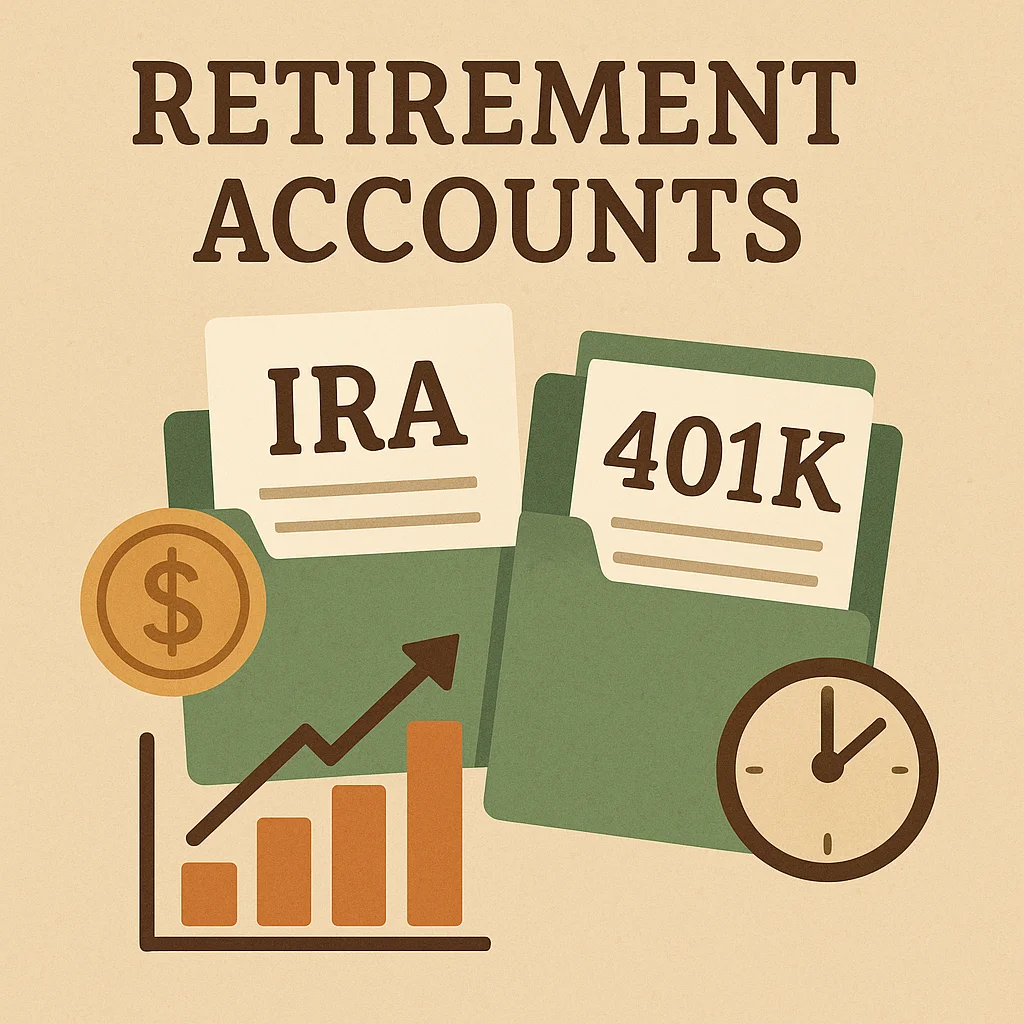Table of Contents
When planning for your financial future—and the legacy you will leave your loved ones—retirement accounts like IRAs and 401(k)s play a critical role. Understanding the differences between these accounts, their tax implications, and how they are treated in estate planning under federal, New York, and New Jersey law is essential for protecting your assets and ensuring a smooth transfer upon death.
Here we discuss a few distinctions among Roth and Traditional IRAs, 401(k)s and Roth 401(k)s, and inherited IRAs, as well as the importance of proper beneficiary designations and the protections these accounts may offer against creditors and during bankruptcy.
Traditional IRA vs. Roth IRA
Traditional IRA:
- Contributions: Made with pre-tax dollars, reducing your taxable income in the year of the contribution.
- Withdrawals: Taxable as ordinary income upon distribution after age 59½.
- Required Minimum Distributions (RMDs): Begin at age 73 (as of 2025).
- Estate Planning Impact: The full account value is included in your gross estate for federal estate tax purposes. Beneficiaries pay income tax on withdrawals.
Roth IRA:
- Contributions: Made with after-tax dollars; no immediate tax deduction.
- Withdrawals: Generally tax-free if the account has been open for at least five years and the account holder is age 59½ or older.
- RMDs: Not required during the original owner’s lifetime—this allows for longer tax-free growth.
- Estate Planning Impact: Still included in the gross estate for federal estate tax, but distributions to beneficiaries are tax-free, offering a significant advantage in wealth transfer planning.
401(k) vs. Roth 401(k)
401(k):
- Contributions: Made pre-tax through employer payroll.
- Employer Match: Often provided, increasing account value.
- Withdrawals: Taxable as income. RMDs are required starting at age 73.
- Portability: Can be rolled over into a Traditional IRA or Roth IRA (tax consequences may apply).
Roth 401(k):
- Contributions: Made with after-tax dollars.
- Withdrawals: Tax-free under the same rules as Roth IRAs.
- RMDs: Unlike Roth IRAs, Roth 401(k)s do require RMDs during the account holder’s lifetime unless rolled over to a Roth IRA.
Inherited IRAs and the SECURE Act
When a non-spouse inherits an IRA or 401(k), they generally must withdraw the entire balance within 10 years under the SECURE Act of 2019 (exceptions apply for certain eligible designated beneficiaries such as disabled individuals or minor children).
- Spousal Beneficiaries: Can roll the account into their own IRA or maintain it as an inherited IRA.
- Non-Spouse Beneficiaries: Must follow the 10-year rule, which can accelerate taxation, especially with Traditional IRAs.
Inherited Roth IRAs are also subject to the 10-year rule but offer a benefit: withdrawals are tax-free if the account was established for five years before the original owner’s death.
Creditor Protection and Bankruptcy: Federal, New York, and New Jersey Law
Federal Protection (Bankruptcy Code §522):
- Traditional and Roth IRAs: Protected up to $1,512,350 (adjusted for inflation) from bankruptcy creditors.
- 401(k)s and other ERISA-qualified plans: Offer unlimited protection from bankruptcy creditors.
New York:
- Traditional and Roth IRAs: Generally exempt from creditor claims under CPLR §5205(c), provided the funds are reasonably necessary for the debtor’s support.
- 401(k)s and pensions: Fully protected under ERISA and New York law.
New Jersey:
- IRAs: Protected under N.J.S.A. 25:2-1(b), but similar to New York, protection may be limited to what is necessary for support.
- 401(k)s: Fully protected as ERISA-qualified accounts.
Note: Inherited IRAs are not protected in bankruptcy proceedings under the U.S. Supreme Court’s decision in Clark v. Rameker (2014). This applies in both NY and NJ.
Importance of Beneficiary Designations
Retirement accounts pass outside of probate when you have a properly named and valid beneficiary. This can:
- Avoid court delays and probate fees
- Ensure privacy for your heirs
- Provide faster access to funds
If there isn’t a named beneficiary, then the account will have to go through probate.
Key Tips:
- Always name primary and contingent beneficiaries.
- Update beneficiaries after major life events like marriage, divorce, or the birth of a child.
Retirement accounts are more than just savings vehicles—they are essential estate planning tools. Each type of account offers distinct tax benefits, distribution rules, and protections under federal and state laws. As estate planning attorneys practicing in New York and New Jersey, we help clients:
- Maximize tax savings through smart retirement planning,
- Protect retirement assets from creditors,
- Ensure beneficiaries are properly designated, and
- Avoid probate delays and disputes.
If you’re unsure whether your retirement accounts are properly aligned with your estate plan, we offer a free 15-minute consultation.


Leave a Reply